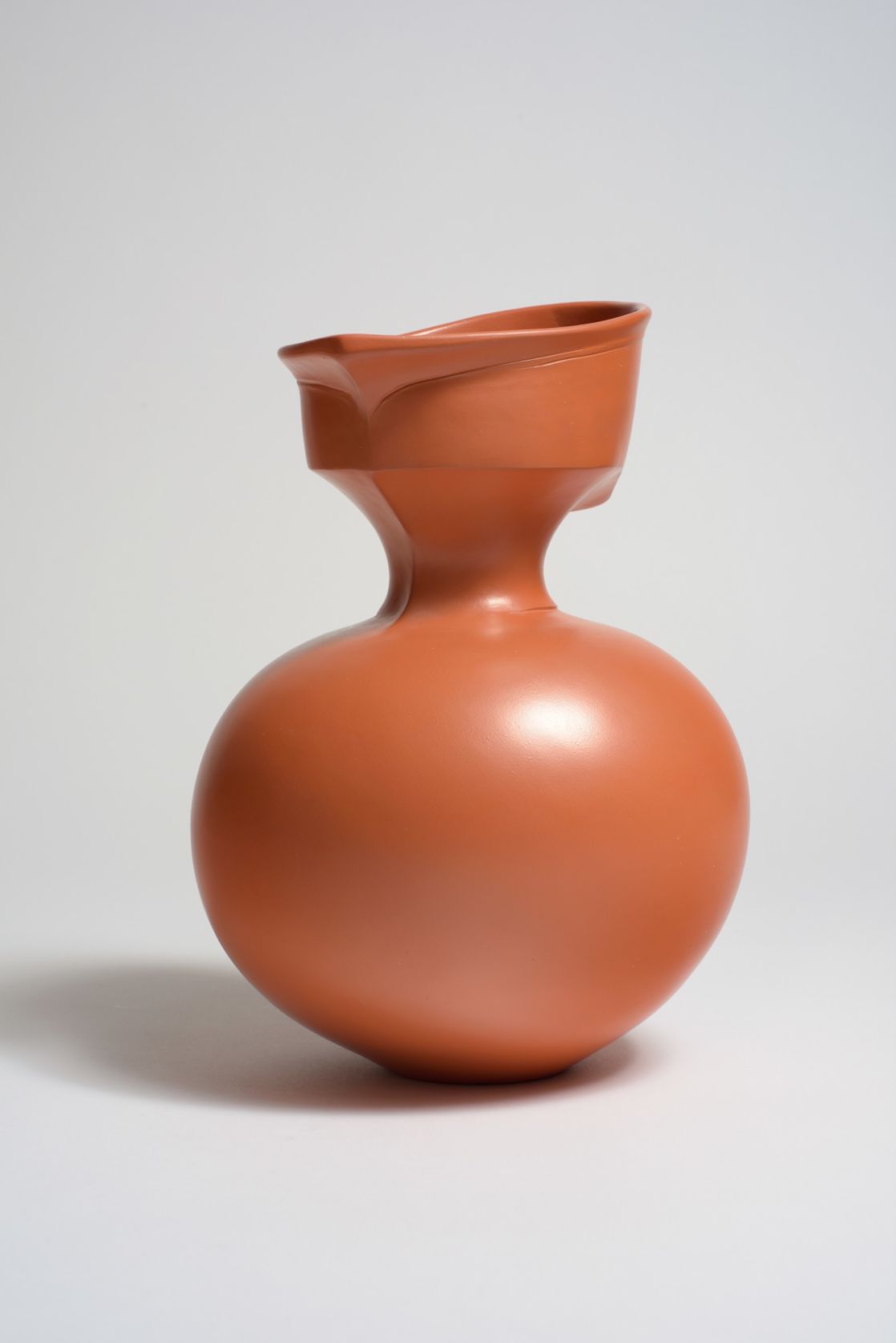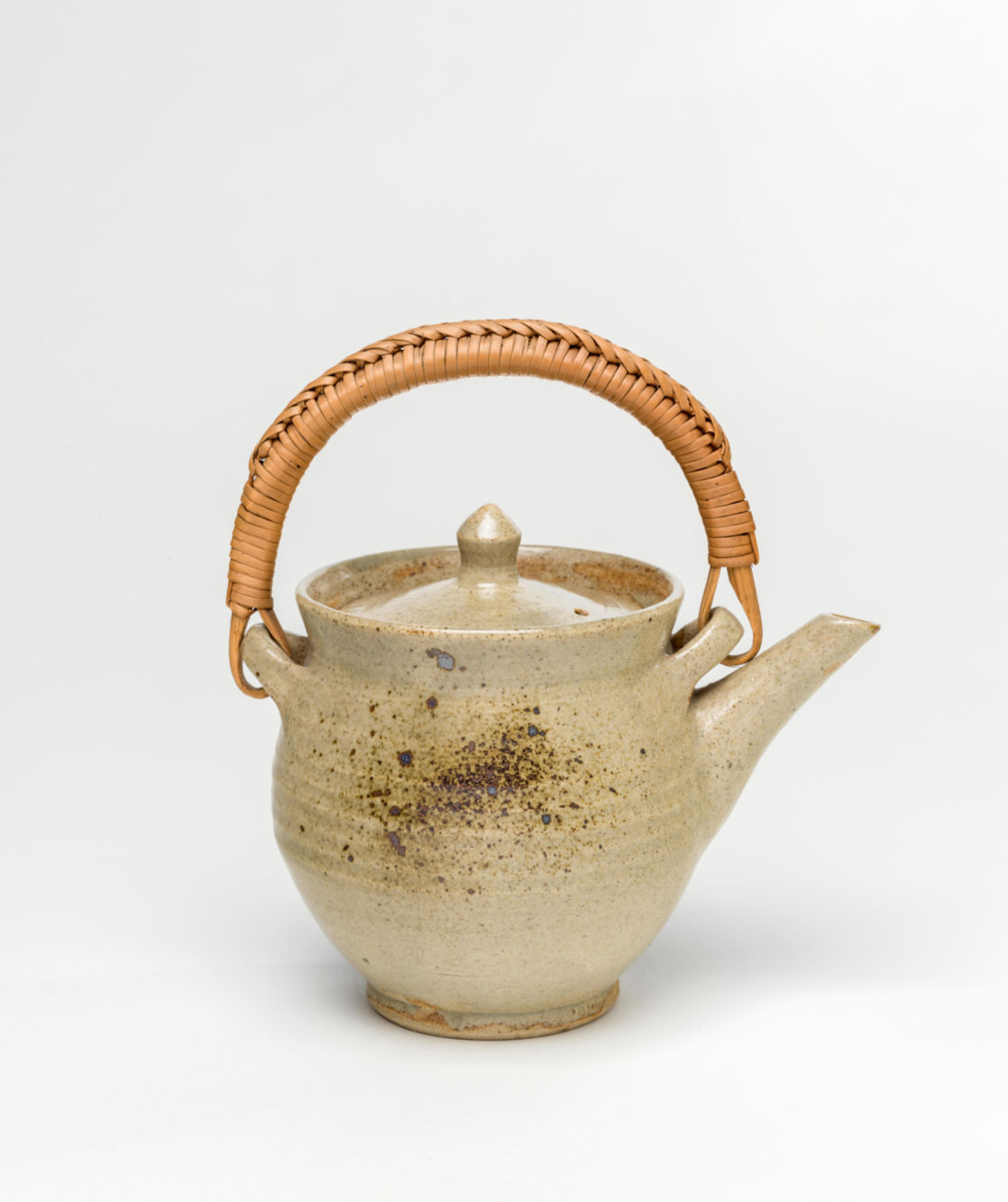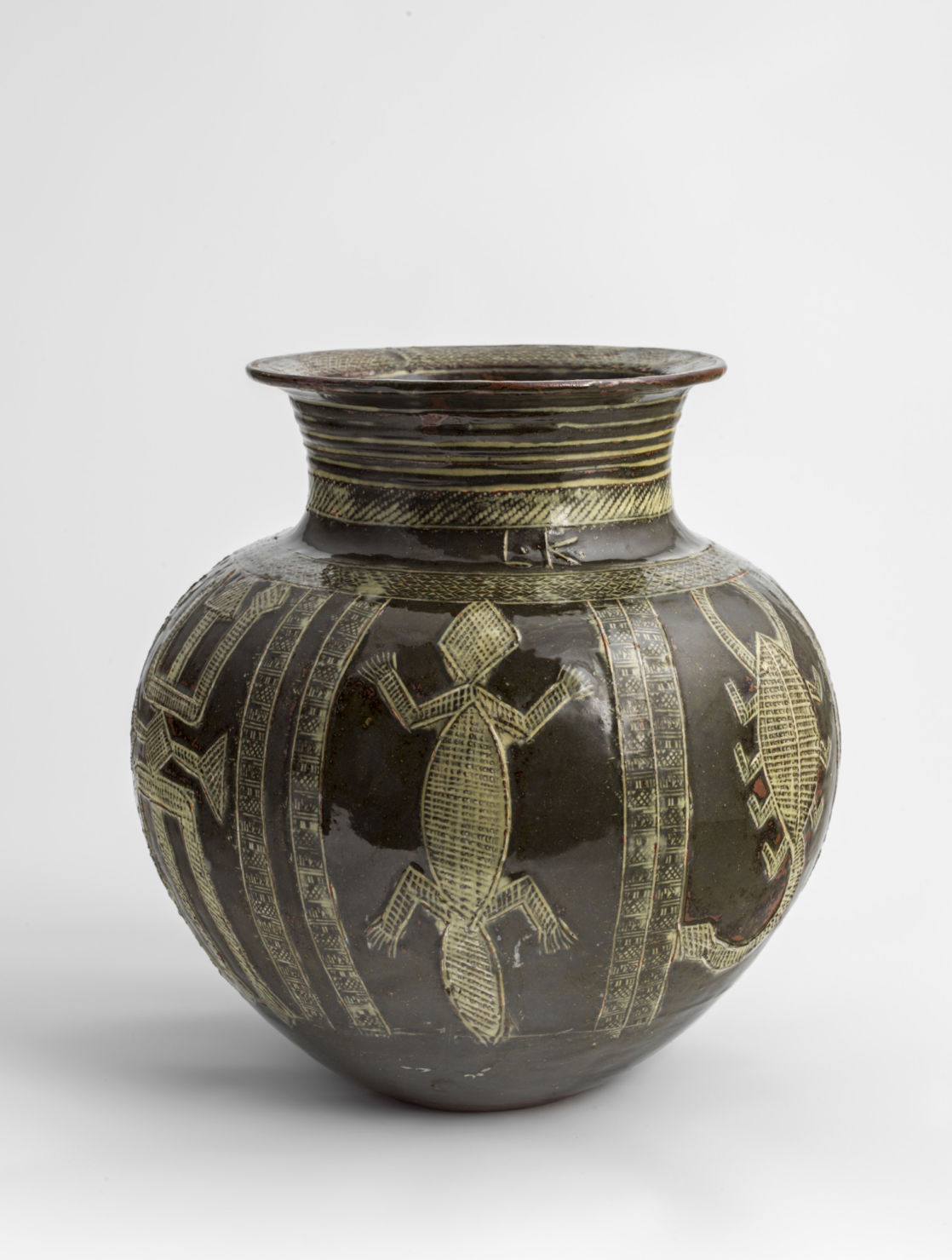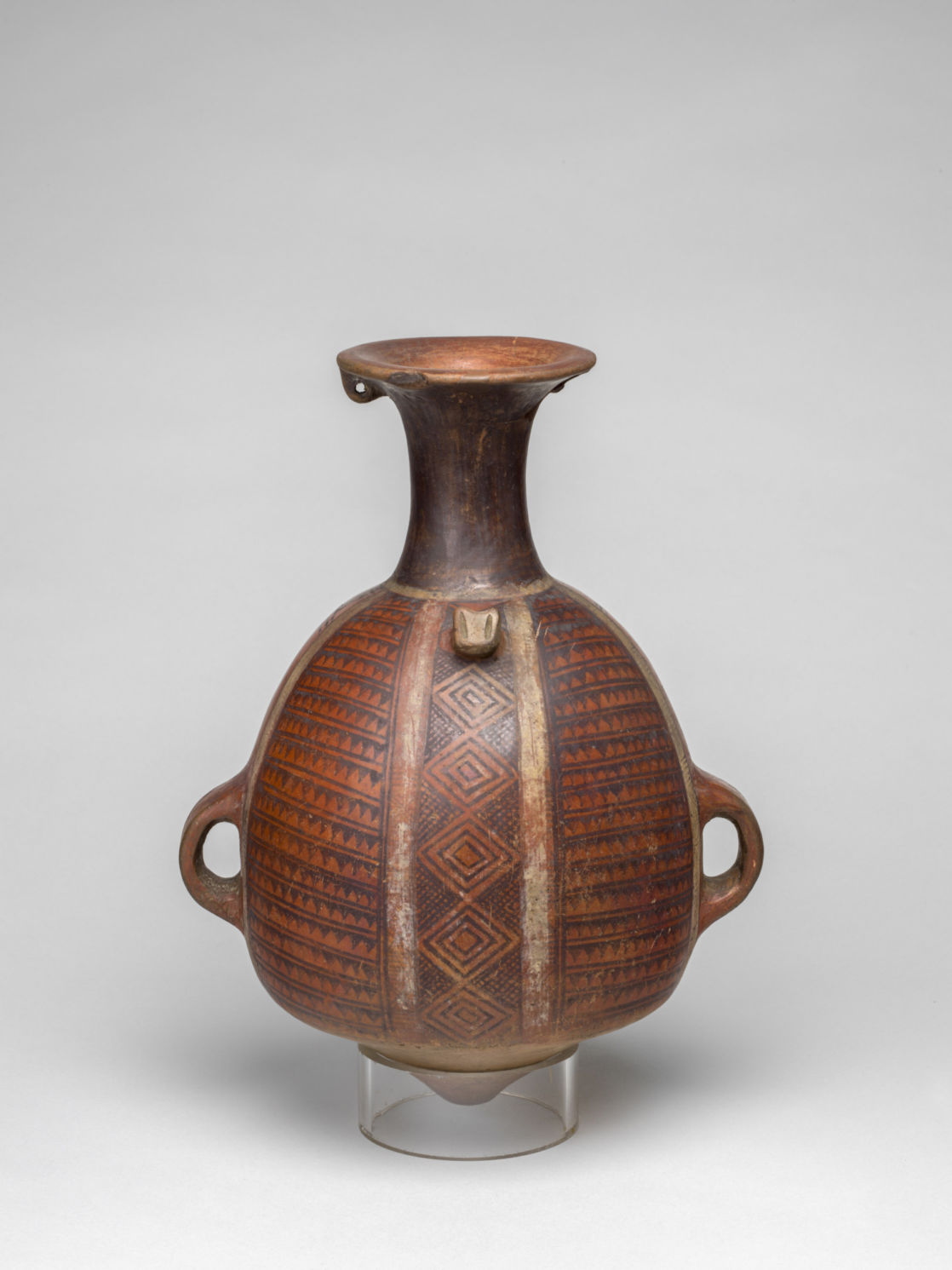Welcome to Ceramic Review
Ceramic Review is the magazine for contemporary and historical ceramics, ceramic art and pottery.
Ceramic Review Issue 334
July/August 2025
Ceramic Review is the magazine for contemporary and historical ceramics, ceramic art and pottery.
July/August 2025
Sebastian Blackie reviews Magdalene Odundo at Cambridge, a personally curated exhibition that reveals the city’s influence on her ceramics career

Magdalene Odundo. Red Angled Ribbed Vessel, 1985. Height 26.3 cm. Private Collection.
For the exhibition Magdalene Odundo at Cambridge, the ceramic artist has personally selected a range of artworks from around the world, which are shown alongside examples of her own unmistakable work. Accompanied by her own words, the items reveal for the first time her personal narrative of the impact of her time spent in Cambridge.
The show contains four of her pieces made many years after she left the city, accompanied by a selection of pots held in the museum’s permanent collection, as well as Cambridge’s Museum of Archaeology and Ethnology. It is co-curated with cultural historian Helen Richie to demonstrate how Odundo’s time at Cambridge School of Art influenced subsequent work. Also included are two pots by her teacher Zoë Ellison, whom she credits with her change of career path from graphics to ceramics. I was also taught by Ellison and like Odundo went on to study at Farnham School of Art. By the time she arrived I was teaching there. I recall us firing Cardew’s kiln in Cornwall and being her personal third-year tutor. Her degree show of glazed stoneware suggests some influences have a long gestation.
The exhibition is crafted to demonstrate how historic artefacts can inspire us today, promoting a concept that pots share a common language that communicate universal human values. Odundo is of the view that a pot’s internal hidden space may be inferred from the external shape and surface in the same way that a person’s outer visible self mimetically represents the whole. But as Claudia Benthien points out in her book Skin, European culture also offers the alternative that the boundary between self and the rest of the world is an impregnable membrane on which we write that which we wish to be read.
TELLING STORIES
Although the historic pots in the exhibition no longer function as intended and have become what Takeshi Yasuda calls ‘exquisite corpses’ they still openly carry traces of their making and use. These traditional blackened pots have been burnished for practical as well as decorative reasons; their dark patina comes from the smoke of firing with wood or dung or subsequently when used for cooking. They have rich stories specific to the culture that produced them.
How different to Odundo’s work, which has simply travelled straight from her studio to a glass case. Their immaculate surfaces, luxuriantly burnished, are sometimes cosmetically carbonised after they emerge naked and orange from the electric kiln. Their curvaceous precision signifies overt skill, the absence of decoration and narrow footed elegance, sophisticated modernism. They are in brilliant defiance of Edwardian and Victorian tropes of the ‘savage’ and ‘simple’. These are pots whose sole purpose is to be gazed upon.

Studio Ceramics. Tea pot. Ellison, Zoe (d. 1987). Stoneware with iron-spattered buff glaze, and cane handle. H12 x W14.5 cm. 1950. © The estate of Zoe Ellison.

Large hand-built stoneware water jar. Kwali, Ladi (Nigerian, c.1925 - d. 1984). Impressed and incised decoration in the traditional Kwali style, with scorpion, snake, fish etc. and geometric design in white slip. The dark-green background is covered with a clear glaze. Height 32.6 cm, diameter, widest point, 32.7 cm, diameter, base, 10.6 cm. Acquisition: Dr John Shakeshaft Bequest. © The estate of Ladi Kwali.
CRITICAL ROLES
At times the selection on show at The Fitzwilliam Museum seems self-indulgent. Two highly decorated Thomas Toft chargers have been moved from the neighbouring gallery to represent the career Odundo did not follow in commercial art. While a glazed bowl by Lucie Rie is displayed solely on the basis that it was given by Rie to Ellison as a wedding present. It seems to me correct that Ladi Kwali is represented. Odundo encountered Kwali and her Gwari style of coiling while she was at Farnham School of Art.
However, it is incomprehensible to me that the Sudanese potter Siddig el Nigoumi is absent when he played such a critical role in Odundo’s development. She refers to Nigoumi as her Mwalimu (teacher) in Alan Windsor’s book A Sudanese Potter in England. He encouraged her, as he had done with his students at Sudan’s national art school, to look to her roots and he pioneered in Britain the techniques of burnishing and smoking based on the Sudanese Jebanah, a coffee pot that becomes blackened when sitting in the hot charcoal fire. Odundo was not to adopt such techniques until much later while she was at the Royal College of Art.
The astute Odundo will have seen how Nigoumi’s English ceramic colleagues, who happily used Oriental techniques and styles, discouraged him from working with anything other than what they considered to be (wrongly) African traditions. She will also have seen Nigoumi synthesising the visual language of indigenous Africa, Islam and modern popular British culture producing hybrid work that reflected his diaspora status. Nigoumi was absent from Odundo’s big exhibition The Journey of Things at the Hepworth Wakefield, so it is sad to see this important maker overlooked again.
LIVED EXPERIENCES
Like Odundo, Nigoumi also has work in the British Museum. Interestingly he is not represented in their African gallery but in the 1900 to present day European gallery, although the work of both artists was made a few miles from each other in leafy Surrey. Both are exceptional artists, but we should analyse their use in museum strategies.
Critic Jeremy Harding noted the way work by artists like Odundo (who was specially commissioned) are strategically placed at the entrance of the British Museum’s African gallery to create the idea that all exhibits might be viewed in the same way, a clever way to decontextualise stolen sacred artefacts. To follow Harding’s thinking, one might suspect in the Fitzwilliam that the portraits of Odundo in work apron and African headscarf have been carefully chosen to suggest authenticity. But what of the potters actually working in Africa, like the late Danlami Aliyu who returned home to Nigeria after studying at Farnham. His practice changed from producing Cardew-style stoneware to traditionally coiled earthenware, decorated with metallic car paint as he could no longer afford the fuel costs of high temperature firings. It is work that reflects the lived experience of modern Africa and has perhaps a closer connection to the historic work on display at the Fitzwilliam.
The return of cultural artefacts is contentious, extensively explored in academic journals and thoroughly covered by Prof Dan Hicks book The Brutish Museums. Some museums are attempting to disentangle their collections from colonial violence. They have legal constraints from doing what might be morally correct, but there are other ways to redress the balance. Magdalene Odundo in Cambridge might seem to be a personal indulgence, but it raises important social and cultural issues, perhaps inadvertently, of personal identity and cultural and national allegiance.

Aryballus of buff ware with front portion above the carination painted red, with geometric decoration in black of bands of triangles either side of a central panel which has a vertical row of diamonds interspersed with cross-hatching. Four narrow vertical bands of white serve as borders. Americas; South America; Peru 1476-1534 (Inca).
Magdalene Odundo at Cambridge, until 24 July, The Fitzwilliam Museum; fitzmuseum.cam.ac.uk
Images: courtesy of Cristian Barnett; The Fitzwilliam Museum, University of Cambridge; Museum of Archaeology and Anthropology, University of Cambridge; British Musuem; Sebastian Blackie